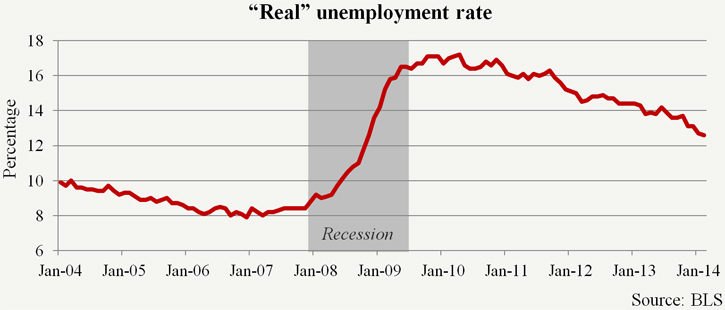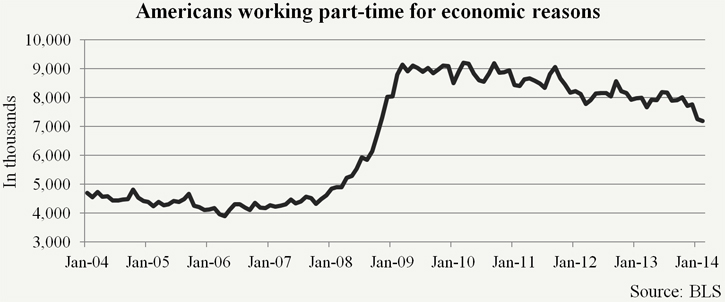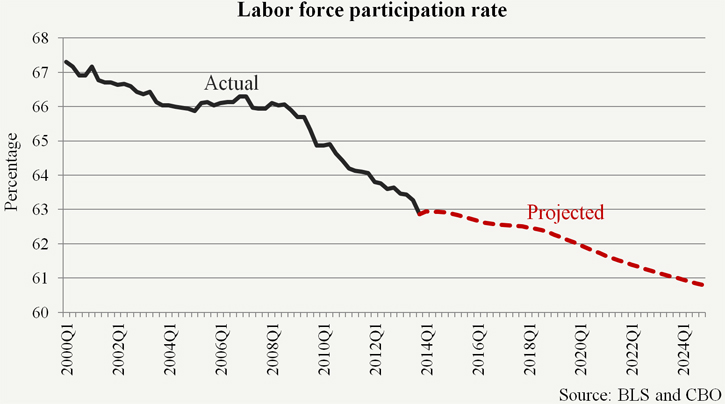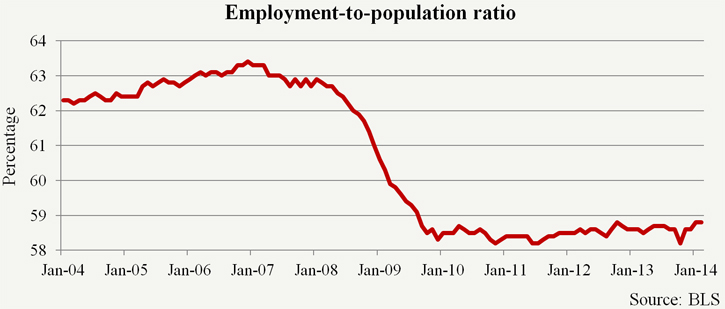Job Growth Remains Sluggish
Employers created 175,000 jobs in February -- job growth continues to be sluggish, and our unemployment rate remains high. February’s job-creation figure is roughly what it must be to keep up with our growing population and has fallen from an average pace of approximately 200,000 jobs created between last June and November.
Sluggish Unemployment Situation
The Department of Labor reported an unemployment rate of 6.7 percent for February 2014, up 0.1 percent from January. The “real” unemployment or U-6 rate is 12.6 percent for February 2014, down 0.1 percent from last month. This is the total percentage of unemployed and underemployed workers.

The “real” number of unemployed Americans is 20.0 million. These are people who are unemployed (10.5 million), want work but have stopped searching (2.3 million), or are working part time because they can’t find full-time employment (7.2 million). The number of unemployed people increased 300,000 from last month.
Concern has been raised about the consistent number of Americans working part time for economic reasons – because they cannot find a full-time position or their hours have been cut back. This figure was near eight million throughout 2013.

The average length of unemployment was 37.1 weeks, compared to 35.4 weeks in January and 36.9 weeks in February 2013. The number of long-term unemployed is 3.8 million Americans, an increase of 203,000 compared to last month. This represents 37.0 percent of the unemployed – an increase of 1.2 percent from last month. During the 1980s, when our country faced a similar recessionary period, the proportion of long-term unemployed never exceeded 27 percent.
Recent jobs reports could partially reflect that extended federal unemployment benefits expired for more than one million Americans at the end of December. To receive payments, people had to look for work actively and were thus counted as part of the labor force. The loss of extended benefits could push many of the long-term unemployed either to take jobs or drop out of the workforce entirely.
Some have argued that weather could have stifled employment. However, Federal Reserve Chair Janet Yellen discounted this in testimony last week stating that the jobs report may “reflect in part adverse weather conditions, but at this point it is difficult to discern exactly how much.” The construction sector, which can be sensitive to weather, added 15,000 jobs in February.
Labor Force Participation Continues to Be Low
The labor force participation rate is 63.0 percent, unchanged from last month and near its lowest level in 35 years. If the labor force participation rate were the same as when President Obama took office, the unemployment rate would be 10.5 percent.
CBO predicts the labor force participation rate will continue to fall even after the economy recovers, down to 60.8 percent by the end of 2024. Based on a CBO labor market report, the Wall Street Journal anticipates that only one-third of the millions who have dropped out of the labor force since the start of the recession in late 2007 will return in the years ahead, when the economy is stronger.

The share of American adults with jobs in February was 58.8 percent, unchanged from last month. This is more than four percentage points below its pre-recession peak.

Next Article Previous Article
